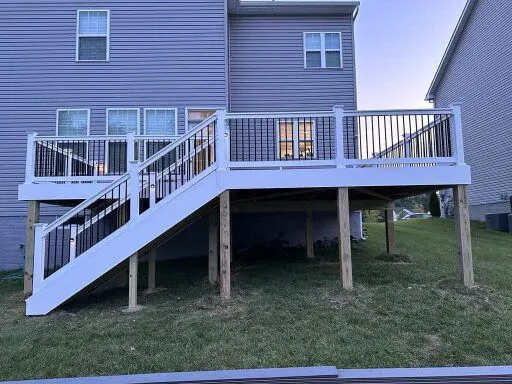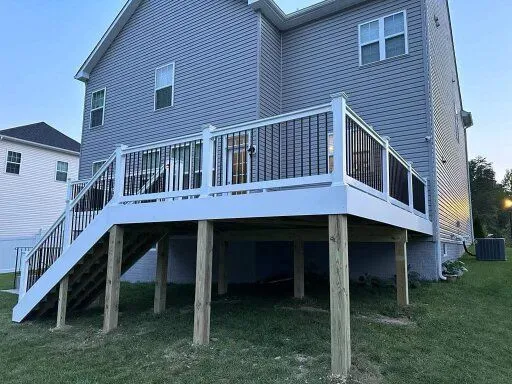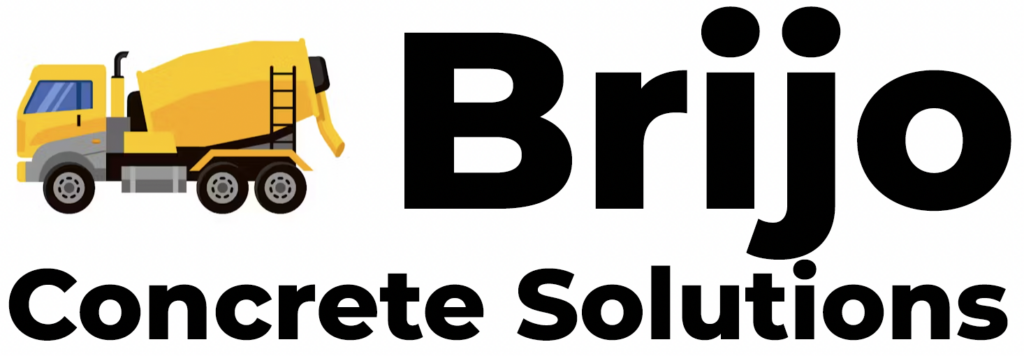Blending Indoor and Outdoor Spaces: How to Create a Seamless Patio Transition
Get a Seamless Patio
A well-designed patio isn’t just an outdoor space; it’s an extension of your home. When done right, it can enhance your lifestyle, increase your home’s value, and create a seamless flow between indoor and outdoor living areas. Modern homeowners are increasingly looking to merge these spaces to enjoy the best of both worlds—indoor comfort and outdoor beauty.
Blending indoor and outdoor spaces requires strategic design choices, including architectural continuity, material selection, furniture placement, and functional enhancements. Whether you’re building a new patio or upgrading an existing one, this guide will help you create a transition that feels effortless and enhances your home’s overall aesthetic and usability.
The Importance of a Seamless Indoor-Outdoor Transition
A smooth transition between indoor and outdoor spaces offers several benefits beyond aesthetics. When designed well, a connected patio can:
- Expand Your Living Space – Effectively increase the usable square footage of your home.
- Enhance Natural Light – Large openings allow more sunlight to filter into indoor spaces, making rooms feel brighter and more inviting.
- Improve Home Value – Homes with well-designed outdoor areas are more appealing to buyers and can command higher resale prices.
- Encourage Outdoor Living – A seamless flow between indoors and outdoors makes it easier to entertain, relax, or dine outside.
With these advantages in mind, let’s explore the best practices for designing a patio that harmonizes with your indoor space.
Architectural Consistency: Creating a Unified Design
One of the key aspects of blending indoor and outdoor spaces is ensuring architectural continuity. Your custom patio should feel like a natural extension of your home rather than an afterthought.
Best Practices for Architectural Consistency

- Extend hardwood or tile flooring from inside to the patio.
- Use large-format tiles for a sleek, modern look.
- If using different materials, select complementary colors and textures.




Choosing the Right Doors for a Seamless Transition
The type of door you use between your indoor space and patio plays a crucial role in the transition. A well-selected door style can make your seamless patio feel like a natural extension of your home.
Best Door Options for Indoor-Outdoor Flow
- Sliding Glass Doors – A popular choice for a seamless connection, offering wide openings and maximizing natural light.
- Bifold Doors – These doors fold and stack to one side, fully opening the space between indoor and outdoor areas.
- French Doors – A stylish option for a more traditional home, offering elegance while maintaining an open feel.
- Pocket Doors – These doors slide into the wall, disappearing completely to create an unobstructed transition.
Pro Tip: Consider energy-efficient glass to regulate indoor temperatures and prevent excessive heat from the sun.
Extending Indoor Comfort to Your Patio
To make your patio as comfortable as your indoor living space, incorporate elements that provide warmth, shelter, and relaxation.
Must-Have Features for an Inviting Outdoor Space
✅ Weather Protection – Use pergolas, retractable awnings, or covered extensions to provide shade and shelter.
✅ Outdoor Heating & Cooling – Install ceiling fans, outdoor heaters, or fire pits to maintain comfort year-round.
✅ Quality Outdoor Furniture – Invest in cushioned, weather-resistant seating to create an inviting and cozy atmosphere.
✅ Proper Lighting – Layered lighting (string lights, lanterns, and recessed fixtures) enhances ambiance and usability.
Pro Tip: Choose furniture with similar materials and color palettes as your indoor decor to maintain design harmony.
Matching Indoor and Outdoor Materials for Cohesion

Selecting the right materials is essential for a seamless transition. Consistency in textures, colors, and finishes helps unify your home and patio.
Best Materials for Indoor-Outdoor Integration
- Flooring: Use stone, concrete, porcelain tile, or composite decking that complements your indoor flooring.
- Furniture: Choose wicker, teak, or aluminum pieces that match your indoor furnishings in style and comfort.
- Textiles: Outdoor rugs, throw pillows, and curtains in indoor-inspired fabrics make the patio feel like an extension of your home.
By selecting materials that complement both spaces, your perfect patio will feel like a natural continuation of your home’s interior.
Functional Zoning: Defining Spaces for Maximum Use
While blending indoor and outdoor areas, it’s important to maintain a sense of organization. Dividing your patio into functional zones ensures that it meets multiple needs.
How to Effectively Zone Your Patio




By clearly defining these areas, your custom patio can serve multiple functions while maintaining a cohesive and balanced look.
Seamless Indoor-Outdoor Decor: Bringing It All Together
Blending your patio with indoor spaces isn’t just about architecture—it’s also about aesthetics.
Tips for a Harmonized Design
- Use a Consistent Color Palette: Stick to similar tones and materials for a cohesive feel.
- Mix Indoor and Outdoor Elements: Bring indoor-inspired furniture outside while adding greenery indoors for balance.
- Add a Statement Piece: A central feature like an outdoor fireplace, fountain, or artistic sculpture can anchor both spaces.
- Unify with Accessories: Coordinating cushions, throw blankets, and table settings help tie both areas together.
With thoughtful decor choices, your patio can feel like an extension of your home rather than a separate space.
Smart Technology for a Modern Indoor-Outdoor Experience
Technology can make your indoor-outdoor transition even more seamless by enhancing convenience and comfort.
Smart Features for a High-Tech Patio




By integrating smart home features, your patio will be more functional and enjoyable, whether you’re working, relaxing, or entertaining.
Final Touches: The Role of Landscaping in Blending Spaces
A well-designed landscape helps tie the indoors and outdoors together, creating a natural flow.
Best Landscaping Techniques for a Seamless Transition




With the right landscaping elements, your patio will feel like an organic extension of your home.
Sustainability: Creating an Eco-Friendly Indoor-Outdoor Flow
Sustainability has become a key focus in modern home design, and your indoor-outdoor transition can embrace eco-friendly practices without sacrificing style or comfort. A sustainable patio design minimizes environmental impact while creating a beautiful, functional space that blends seamlessly with your home.
How to Incorporate Sustainable Elements into Your Patio

- Use reclaimed wood, recycled composite decking, or natural stone for flooring to reduce environmental impact.
- Opt for sustainably sourced furniture made from bamboo, teak, or recycled plastic.

- Install solar-powered outdoor lights to illuminate walkways and dining areas without increasing electricity consumption.
- Use LED lighting for both indoor and outdoor spaces to reduce energy usage.

- Select drought-resistant plants and native greenery that require minimal watering and maintenance.
- Utilize rain gardens or permeable pavers to control water runoff and reduce soil erosion.

- If your patio is covered, consider a green roof to insulate the space and improve air quality.
- Living walls or vertical gardens can seamlessly connect your indoor and outdoor spaces while acting as a natural privacy screen.
By integrating sustainability into your patio design, you’ll create an energy-efficient and environmentally conscious space that enhances both your home and the planet.
The Future of Indoor-Outdoor Living: Trends to Watch
As outdoor spaces become more essential to home design, new trends are shaping the way patios function and blend with indoor areas. Keeping up with these innovations ensures your patio remains stylish, practical, and valuable for years to come.
Emerging Indoor-Outdoor Trends

- The concept of biophilic design focuses on incorporating nature into living spaces to enhance well-being.
- Features like large windows, indoor plants that extend to the patio, and natural materials create a seamless, nature-inspired transition.

- More homeowners are incorporating work-friendly outdoor areas with shade structures, built-in desks, and Wi-Fi boosters.
- Weatherproof charging stations and ergonomic seating allow remote work in a refreshing outdoor environment.

- Voice-controlled lighting, automated pergolas, and motion-sensing security systems are making patios more intelligent and functional.
- Integration with smart home systems allows homeowners to control outdoor features with ease.

- Adjustable roofing, retractable glass walls, and climate control systems are allowing patios to be used in all seasons.
- Heated flooring and insulated fire features enhance cold-weather comfort, while cooling misters provide relief during summer.
By staying ahead of these trends, you can design a patio that remains modern, efficient, and perfectly suited to evolving lifestyle needs.
Designing a Patio That Feels Like Home
A well-designed patio transition enhances your home’s functionality, aesthetics, and overall enjoyment. By maintaining architectural consistency, using the right materials, integrating smart technology, and optimizing comfort, you can create a patio that feels like a seamless continuation of your indoor space.
Whether you’re looking to entertain, relax, or create a peaceful retreat, your patio should reflect your lifestyle and personal style. With the right approach, your outdoor space won’t just be an add-on—it will become an essential part of your home.
Ready to transform your patio into a seamless indoor-outdoor oasis? Contact Brijo Concrete Solutions today to bring your vision to life with expert design and craftsmanship!



